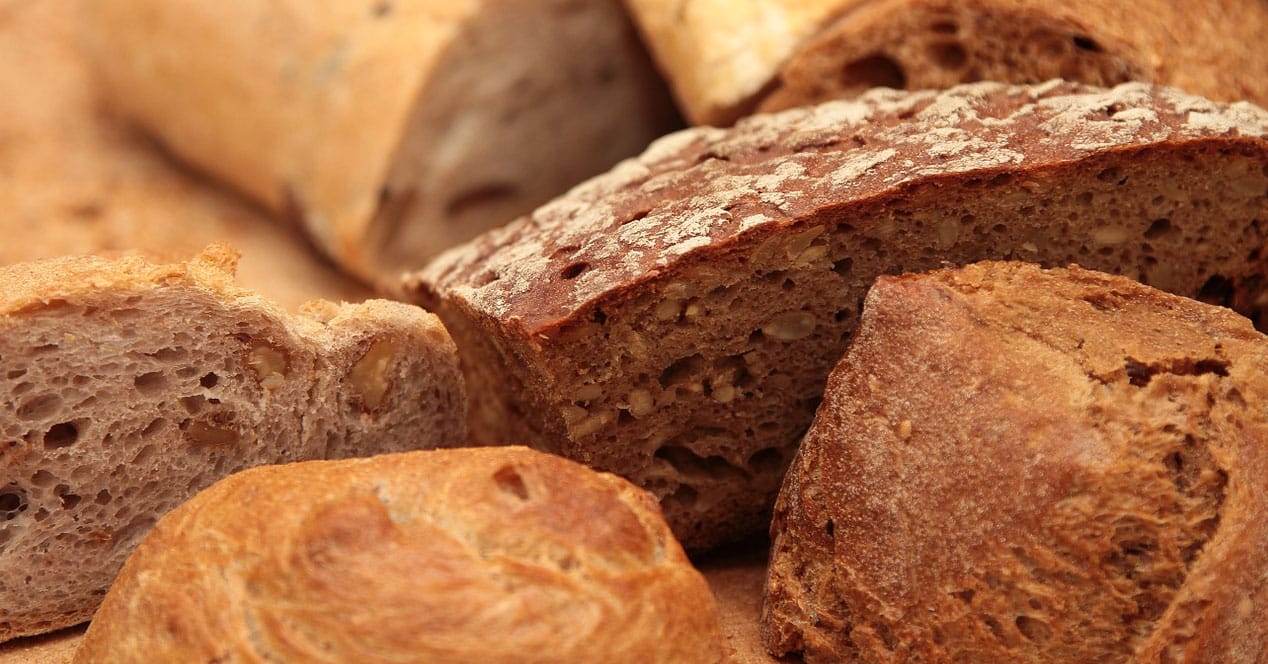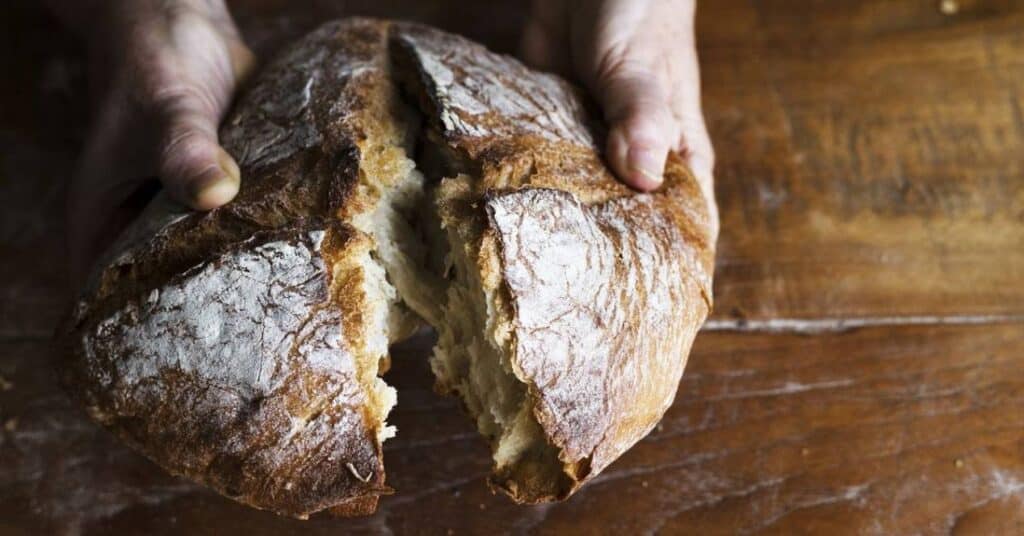
It is enough for someone to make a food fashionable for all of us to question whether it is as healthy as they paint it. Sourdough bread has had a significant boom in recent years. They make us see that it is healthier because it is more "artisanal", but is this true?
Many breads are packed with nutrients and can be part of a healthy diet, including sourdough bread. This sourdough was baked and cooked more at home in the old days. It's mainly due to the impressive health benefits of sourdough bread.
What is sourdough?
Sourdough is nothing more than the result of ferment the water with flour and do not add yeast to it. The flour itself has bacteria and yeasts that produce fermentation naturally. Its process has been traditional for centuries, which is why it is usually sold as more "artisanal" by dedicating more time to it. The result is spectacular. We will have a bread with a more intense flavor and smell than normal bread.
If you are one of those who has little patience, forget to make sourdough bread yourself. Quality always requires dedication, and although there are several techniques, the process usually lasts five days.
- Day 1. Mix the water and flour. The flour has to be integral. It is allowed to rest under the conditions required.
- Day 2. Add flour, sugar and water.
- Day 3. We will notice that the mass begins to change. We will put more strength flour and water again.
- Day 4. We skim off the brown liquid on the surface and add more strength flour, again.
- Day 5. We will have the sourdough ready to make our bread.
Nutrients
The nutritional profile of sourdough is similar to most other breads and will be influenced by the type of flour used to make it, such as whether it's made from whole grains or refined. On average, a medium slice of sourdough bread made with white flour and weighing approximately 60 grams provides:
- Energy: 188 calories
- Carbohydrates: 37 grams
- Fiber: 2 grams
- Protein: 8 grams
- Fat: 1 gram
It also stands out for being rich in selenium, folate, thiamin, niacin, riboflavin, manganese, iron and copper. Aside from its nutrient content, sourdough has some special properties that allow it to surpass the benefits of most other types of bread.
What differentiates sourdough from traditional bread is that it is made by fermenting flour and water, rather than adding yeast to create a fermentation. The fermentation process helps unlock the B vitamins in the bread, which help with energy metabolism. In addition, sourdough is generally made with fortified flour, so it provides iron and folate, which are important for women, especially if they are pregnant.

Advantages
Sourdough bread seems to have better health effects than regular bread. That is why many people opt for this type of dough.
More nutritious than normal bread
Although sourdough bread is typically made with the same flour as other types of bread, the fermentation process used to make it improves the nutritional profile in a number of ways. For one thing, whole grain breads contain a fair amount of minerals, including potassium, phosphate, magnesium, and zinc. However, the body's ability to absorb these minerals is limited by the presence of phytic acid, also commonly called phytate.
Phytate is found naturally in several plant-based foods, including grains, and is often referred to as an antinutrient because it binds to minerals, making it difficult for your body to absorb them. Lactic acid bacteria found in sourdough bread lower the pH of the bread, helping to deactivate phytate. Because of this, sourdough bread tends to contain less phytate than other types of bread.
Research suggests that fermentation of sourdough could reduce the phytate content of bread by more than 70%, with the lowest levels found in breads made with doughs with pH levels between 4,3 and 4,6 and fermented at 25°C. Additionally, the low pH of the dough, combined with the lactic acid bacteria it contains, tends to increase the nutrient and antioxidant content of sourdough bread.
Finally, the longer fermentation time of the sourdough helps improve the aroma, flavor, and texture of the whole wheat bread. So if you're not a fan of whole wheat bread, a whole wheat sourdough bread can be the perfect way to include whole grains in your diet.
Easier to digest
Sourdough bread is usually easier to digest than bread made with brewer's yeast. Lactic acid bacteria and wild yeast present during sourdough fermentation help neutralize antinutrients naturally found in grains, helping the body to digest foods made from these grains more easily.
Fermentation of sourdough can also produce prebiotics, a type of indigestible fiber that feeds beneficial bacteria in the gut, which in turn eases digestion and improves gut health. Additionally, the fermentation process of sourdough also helps break down large compounds found in grains, such as gluten proteins, ultimately making them easier for the body to digest.
El low gluten of sourdough bread can make it easier for people with celiac disease to tolerate. This makes gluten-free sourdough bread an interesting option for people with gluten-related disorders. However, it must be taken into account that sourdough fermentation does not break down gluten completely.
Controls blood sugar level
Sourdough bread may have a better effect on insulin and blood sugar levels than other types of bread, although scientists don't fully understand the reason for this. Researchers believe that sourdough fermentation can change the structure of carbohydrate molecules. This lowers the glycemic index of the bread and slows the rate at which sugars enter the bloodstream.
Also, lactic acid bacteria found in the dough produce acids during fermentation. Some researchers believe that these acids may help prevent a spike in blood sugar. The sourdough fermentation process is often used to make rye breads because rye does not contain enough gluten for baker's yeast to work effectively.

Is it better than regular bread?
There are media that assure that we are facing a super food with incredible powers. It's true? Is a raisin bread less fattening?
Friends, the question is not in the sourdough, but in the flour that we use to make the bread. The ideal is to use a whole wheat flour, regardless of the cereal from which it comes. What is not permissible is to use a refined white flour, since we will not find any added bran and its digestion will be the same as that of a normal white bread. The high glycemic index and its empty calories will end up turning into fat, regardless of the sourdough.
When we use wholemeal flours, the fiber reduces the entry of sugar into the blood and will use part of the starch to pass to the intestine without If we use flours with a significant percentage of bran, the fiber will reduce the entry of sugars into the blood, among other things.
So we can confirm that it is healthier than normal bread if we use whole wheat flour. Avoid being fooled by selling you white bread with sourdough, since that dough does not have any kind of super power in our health.
How is it done? Recipe
We can make fresh sourdough bread at home with three simple ingredients: water, flour, and salt. The necessary steps to do it correctly are:
- We'll make a sourdough starter a few days ahead. We can find many simple recipes online. Creating an initial starter takes less than 5 minutes.
- We will feed the starter daily and let it grow for a few days. We will use some of this starter to make the bread and save the rest for future use.
- The day we want to make bread, we will mix part of the sourdough with flour and water and let this mixture rest for a few hours. Then we will add salt.
- We will fold the dough several times before letting it rest for 10 to 30 minutes. We will repeat the folding and resting steps several times, until the dough becomes smooth and elastic.
- In the final rest, we will let the dough rest at room temperature until it grows approximately 1,5 times its original volume.
- We will shape the loaf of bread and bake it.
- Let the bread cool on a wire rack for 2-3 hours before slicing.
- Keep in mind that preparing a sourdough starter will take 3-5 days. We should not rush this process, since the quality of the starter is what will give the dough a good flavor and help it rise.
Also, we must remember that we will only use a part of the starter to make the bread. We can save the rest for future use as long as we put it in the fridge and “feed” it at least once a week. When we're ready to make another loaf, we'll simply take the starter out of the fridge 1-3 days ahead of time and feed it once a day until it's strong again.